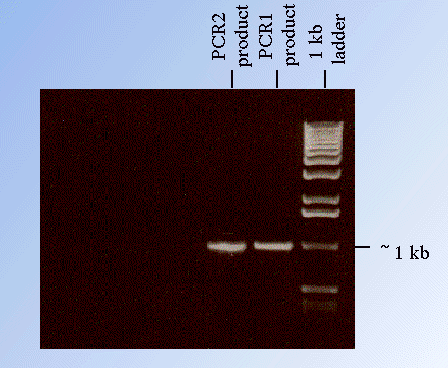
The product of a PCR should be a fragment or fragments of DNA of defined length. Many techniques can be used to detect amplified sequences (see Table).
| Visualization | |
gel electrophoresis |
-EtBr staining (UV transilluminator, image analyzer)
-Southern blotting (hybridization with labeled probe) -Incorporation of label into amplifying sequence -Silver staining |
digestion |
-Agarose or polyacrylamide gel
-HPLC |
| Hybridization with labeled probe | |
| UV detection | |
| Voltage-initiated chemical reaction/photon detection | |
| Radioactive or fluoescent-based DNA sequencing |
